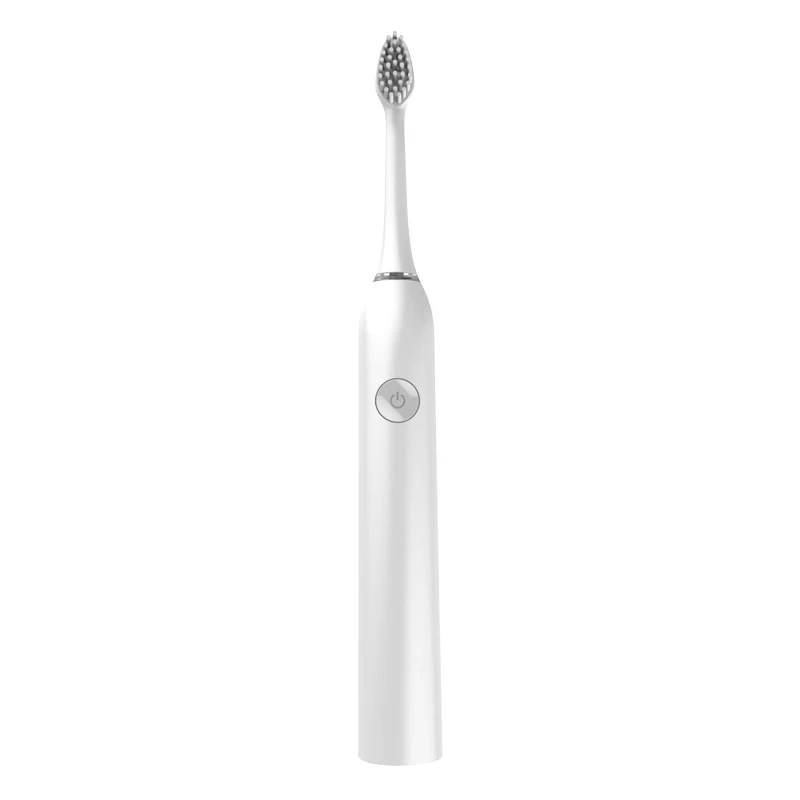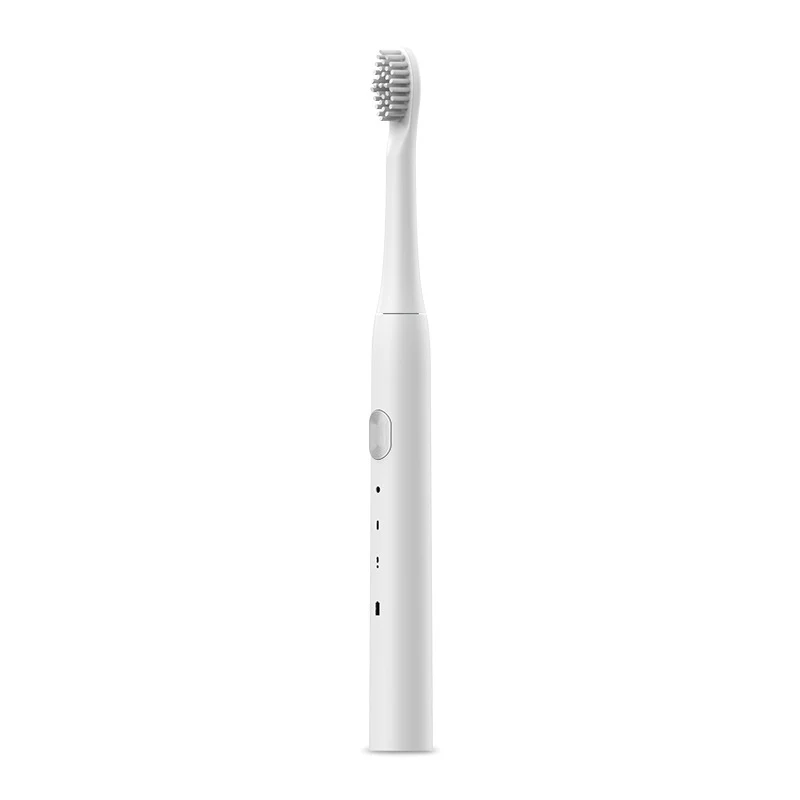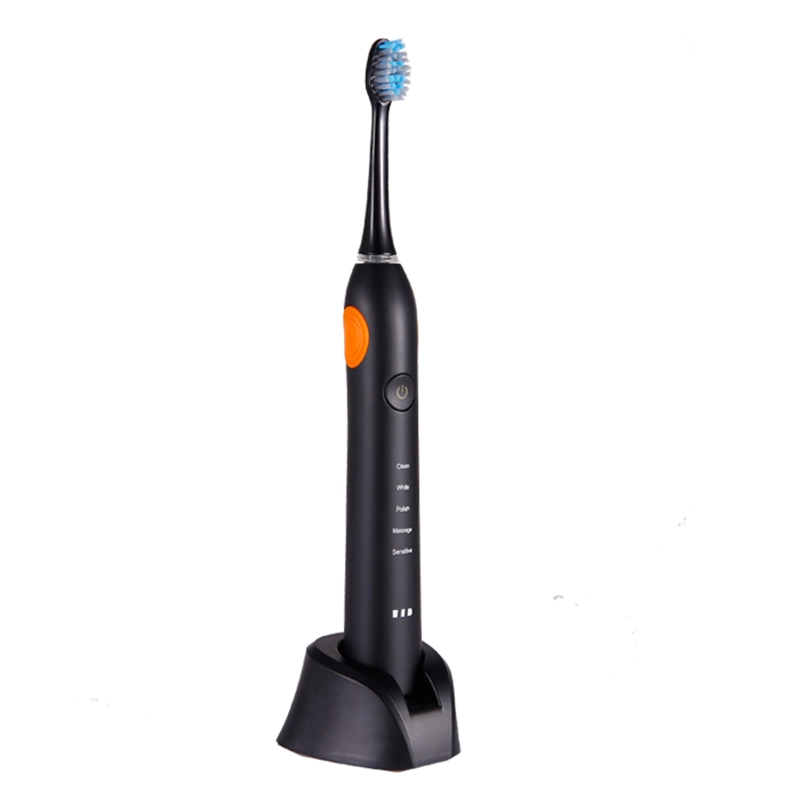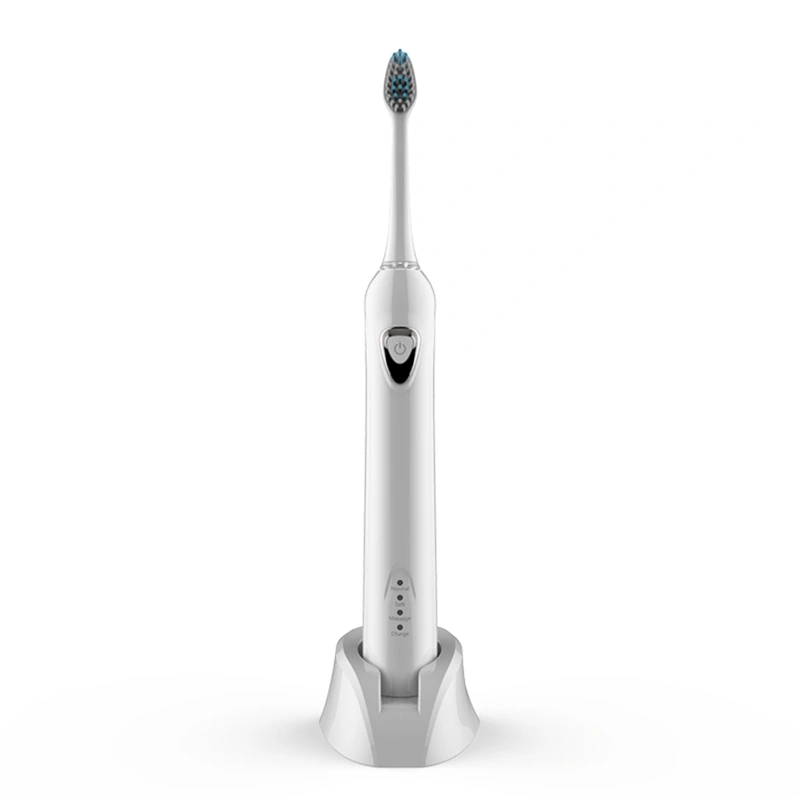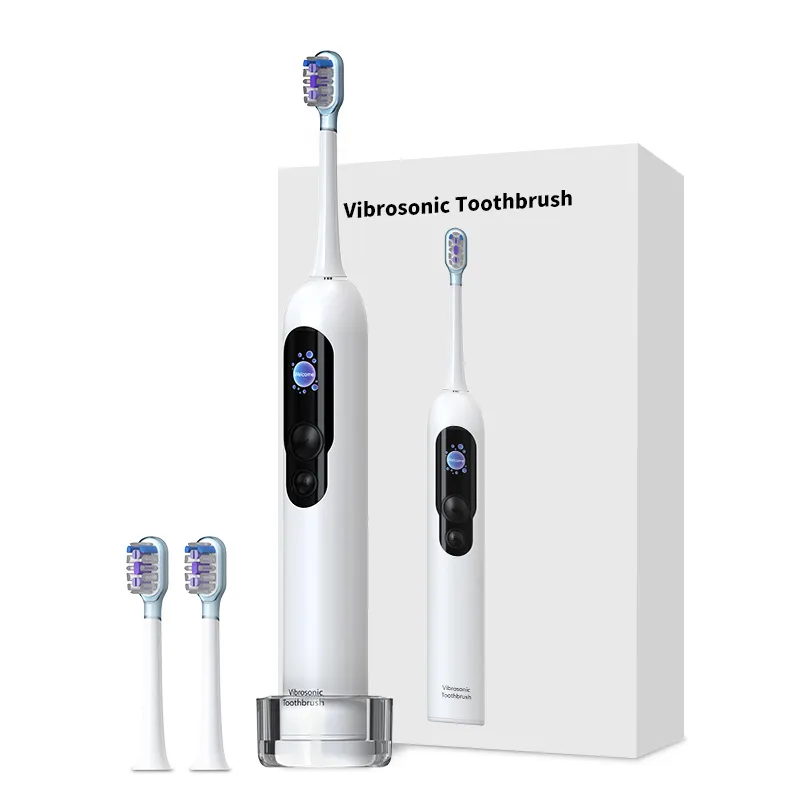Location:HOME > INFO CENTER >
Differences between sonic toothbrush and ultrasonic toothbrush
Date:2021-10-18 10:15
Sonic and ultrasonic toothbrushes can be confused due to similar names. But they have different principles of work. In this article, we will analyze how they differ, how to choose one or another brush, and what are the pros and cons of these technologies.
sonic and ultrasonic: what are we talking about
A person is able to hear sonic vibrations in the frequency range from 16 Hz to 20 kHz. Everything above this threshold is ultrasonic; everything below is infrasonic. Ultrasonic spreads well in the soft tissues of the body, therefore it is used for ultrasonic of internal organs and for medicinal purposes. Ultrasonic also cleans surfaces well, and for this it is appreciated in toothbrushes.
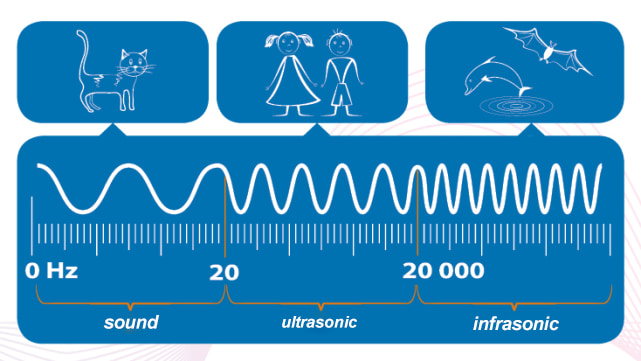
Ultrasonic brush
These brushes generate an ultrasonic wave using a piezoceramic transducer built into the body or handpiece. As a rule, it vibrates at a frequency of 1.6 MHz, which is called therapeutic.
It is believed that ultrasonic of this frequency relieves pain, fights spasms, inflammation and improves blood circulation in the gums by heating them. The power of ultrasonic in the brushes is such that it heats the gums by no more than 1 degree. It is not noticeable to the user, but it is good for the gums. The main thing is that ultrasonic destroys the chains of bacteria that make up dental plaque. The wave penetrates into hard-to-reach places, clearing interdental spaces, braces and other structures from plaque.
How to brush your teeth with an ultrasonic toothbrush
There are three well-known manufacturers of ultrasonic toothbrushes - Emmi-dent, Megasonex and Donfeel. Each of them has a different approach to the use of ultrasonic.
So, in Emmi-dent brushes, the piezoelectric element is not in the body, but in the cleaning attachment, so the ultrasonic wave penetrates deeper into the gums. At the same time, the brush head does not make any movements - you brush your teeth with it like a conventional mechanical brush. Otherwise, if there were movements, the piezoelectric element would not last long. To some, a stationary electric toothbrush may seem unusual.
Megasonex and Donfeel combine ultrasonic with moving bristles - such brushes are more common, but their piezoelectric element is located in the handle, so the ultrasonic does not penetrate so deeply into the gums.
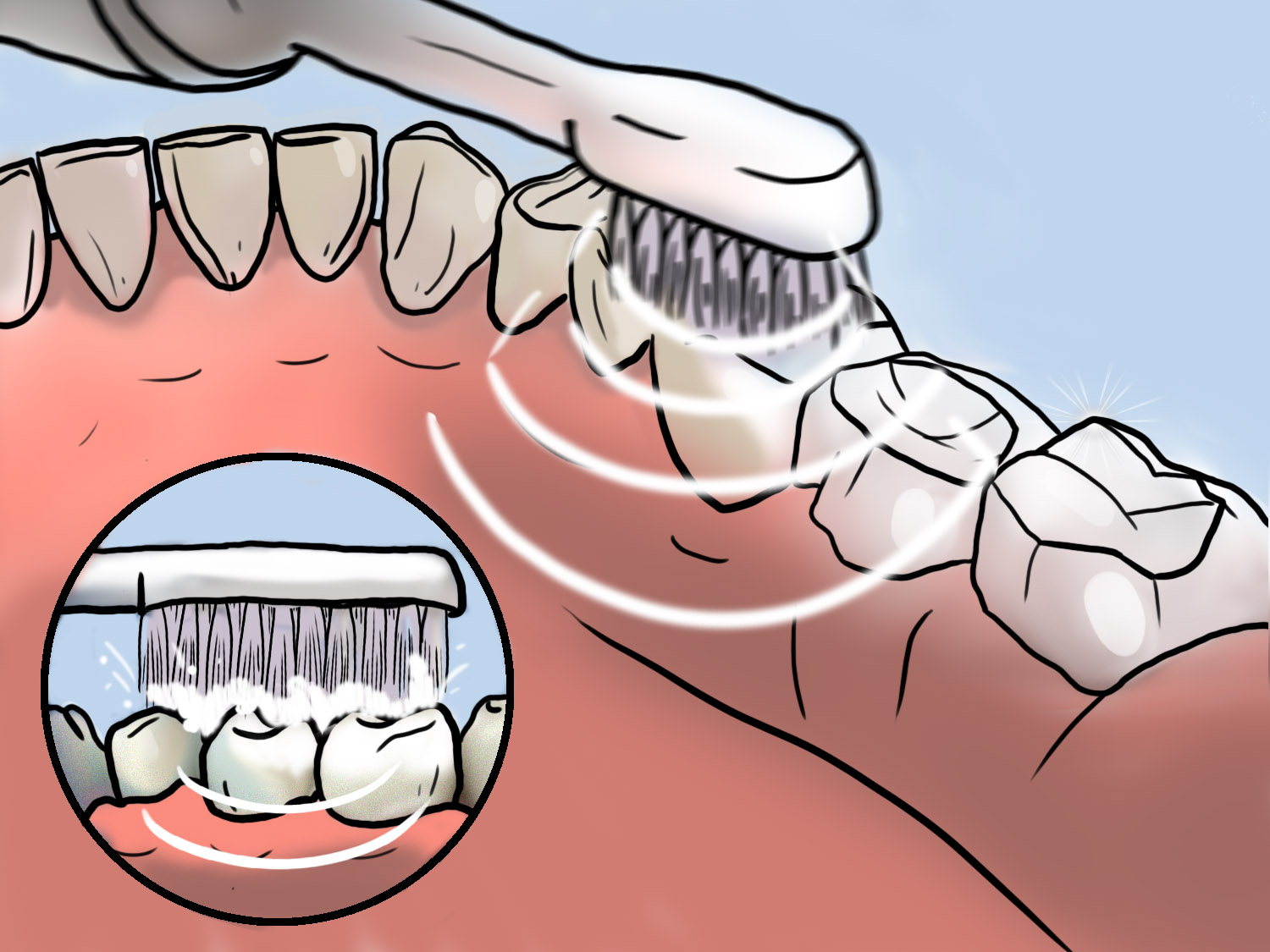
Select a suitable mode before cleaning. The intensity of the impact and the number of vibrations per minute depend on this. For the best result, the main thing is to adhere to a few rules.
- Hold the brush at a 45-degree angle to your teeth. The head will work by itself, you only need to make small circular movements.
- A complete brushing should take you about 2-3 minutes, including brushing your tongue.
- Then rinse your mouth with plain water, decoction, or medical fluid.
- After the procedure, rinse and place the electric toothbrush on the stand with the head up. If required, put the device on the charging station.
Ultrasonic brush: pros and cons
Ultrasonic technology is less common - due to the quiet operation, some people think that the Emmi-dent brushes are not working. Nevertheless, ultrasonic destroys pathogenic microflora, cleaning the oral cavity almost completely.
These are the advantages of ultrasonic toothbrushes.
- Effective removal of not only soft plaque, but also pigmented.
- Antibacterial action on the oral cavity.
- Deeper penetration of the therapeutic components of the pastes into the tissues of the teeth and gums.
- Convenient for cleaning dentures and braces.
- Most models have an operation indicator, multiple modes and power switches.
The disadvantages of ultrasonic toothbrushes are as follows.
- Longer brushing procedure than other brush. The recommended exposure time for each area of the teeth is 5-10 seconds.
How to choose an ultrasonic toothbrush
- If you want a stronger healing effect on the gums, choose a brush with a piezoelectric element in the attachment, such as the Emmi-dent.
- Each user needs their own attachment. Check if there are additional attachments included (usually you can buy them separately).
- If you plan to take the brush on trips, check to see if the travel case is included.
Sonic toothbrush
Sonic - these are electric toothbrushes , the bristles of which make amplitude movements. It works like this: an electromagnet that rocks the brush head with a spring and a resonator with a frequency of 260 Hz creates a sonic wave. This frequency, combined with the special vibration amplitude of the bristles, causes the mixture of saliva and toothpaste to circulate in the mouth, as if washing the tooth from all sides. In fact, all electric toothbrushes, except for ultrasonic ones, are sonic: these are all electric toothbrushes of the brands Oral-B, Philips and others. It turns out that the liquid cleans hard-to-reach places - the interdental spaces and the gingival groove. In this case, the bristles move up and down, sweeping away plaque from the gum to the edge of the tooth. They make up to 20-40 thousand movements per minute, so they remove more plaque than a regular brush does.
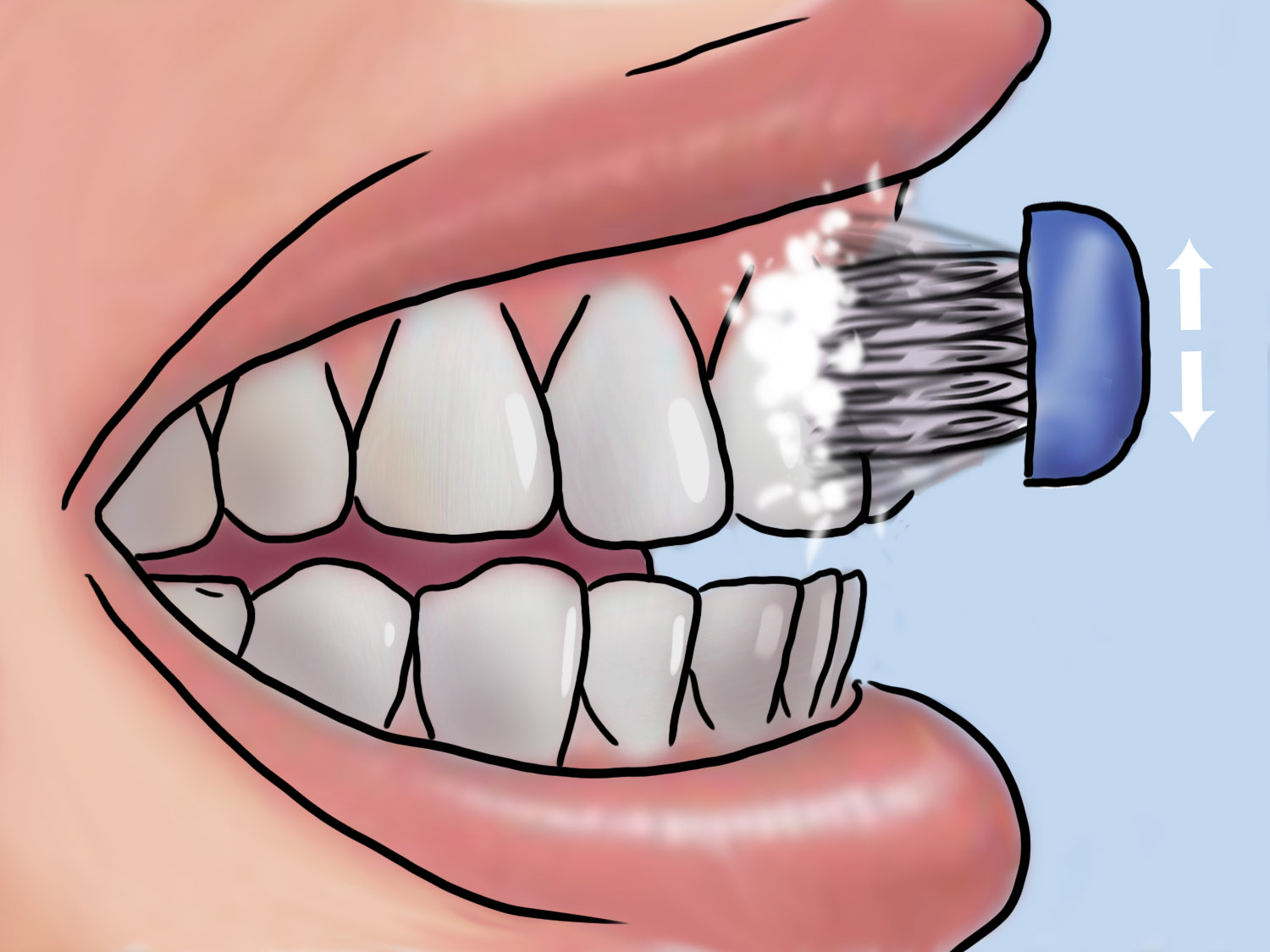
Sonic toothbrush: pros and cons
Such devices are recommended for people who have a predisposition to the formation of tartar - brushes by rubbing effectively break plaque and fresh stones, preventing them from aging and hardening.
Benefits of sonic brushes:
- The sonic brushes perform the usual sweeping or circular motions.
- Perfectly removes soft and hard plaque.
- Provides prevention of stone formation.
- They have a wide variety of attachments.
Cons of sonic brushes:
- Sonic electric toothbrushes have no contraindications.

How to choose a sonic toothbrush
Here are some things to look out for when choosing a sonic brush:
- The power and number of movements of the bristles. The more intensive, the better the brush will clean.
- Brush operating modes. For sensitive enamel or gum disease, you need a gentle mode device.
- Availability of additional replaceable nozzles and their type. Each family member needs a personal brush head, while children and adults with sensitive teeth need a soft bristle brush head. Any attachments can be purchased separately.
- If you would like to take your brush on trips, check if there is a travel case included.
What is the bottom line: a sonic or ultrasonic toothbrush?
Sonic and ultrasonic toothbrushes work in different ways and are suitable for different purposes. The ultrasonic toothbrush should not be used during acute inflammation of an infectious gum disease - heating tissues and increasing blood circulation can be harmful, contributing to the spread of infection and worsening health. However, in chronic diseases, the benefits of using ultrasonic, on the contrary, will be noticeable - it helps to prevent exacerbations, strengthening and healing the gums.
It is best to choose an ultrasonic toothbrush in the following cases:
- after professional cleaning or bleaching;
- when staining enamel with drugs or food;
- for the care of teeth without visible damage.
A sonic brush is more suitable if:
- you have veneers, fillings, braces and other orthodontic structures installed;
- have chronic inflammation of the gums;
- there is old plaque, tartar in the interdental space or on the back of the teeth.
As a professional manufacturer of electric toothbrush and oral irrigator / water flosser, Shenzhen Relish provides various types of electric toothbrush wholesale and OEM customized services. You can also wholesale water flosser from Relish at factory price. We can provide you highly competitive prices and look forward to working with you.

Post a comment
- All comments(0)
No comments yet, come be the first!

 日本語
日本語 Español
Español Deutsch
Deutsch 中文
中文